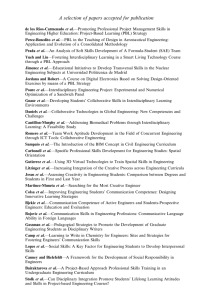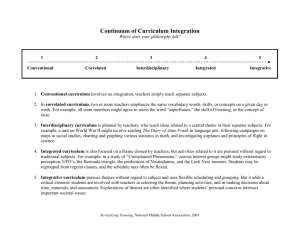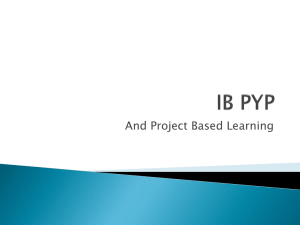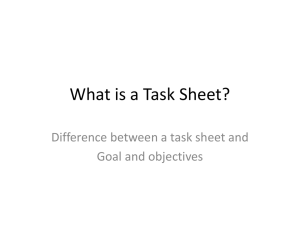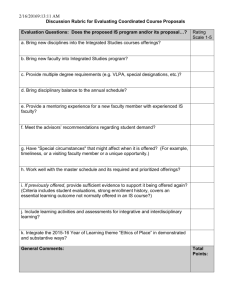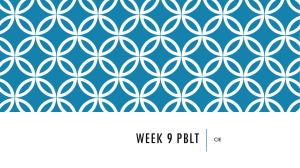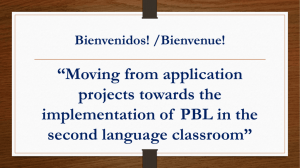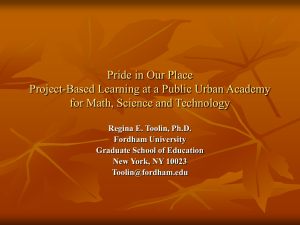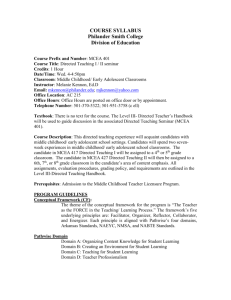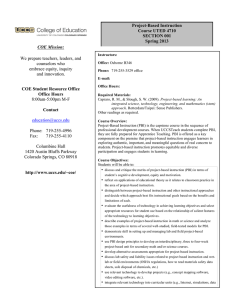A Handbook Beginning and a Principal Message
advertisement
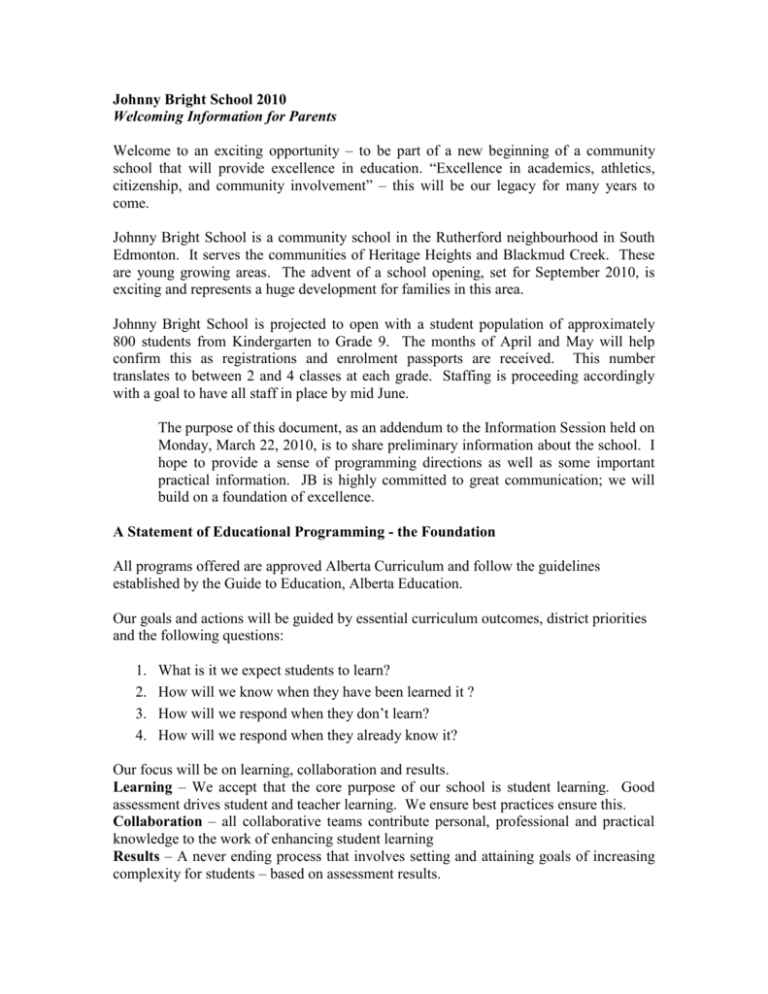
Johnny Bright School 2010 Welcoming Information for Parents Welcome to an exciting opportunity – to be part of a new beginning of a community school that will provide excellence in education. “Excellence in academics, athletics, citizenship, and community involvement” – this will be our legacy for many years to come. Johnny Bright School is a community school in the Rutherford neighbourhood in South Edmonton. It serves the communities of Heritage Heights and Blackmud Creek. These are young growing areas. The advent of a school opening, set for September 2010, is exciting and represents a huge development for families in this area. Johnny Bright School is projected to open with a student population of approximately 800 students from Kindergarten to Grade 9. The months of April and May will help confirm this as registrations and enrolment passports are received. This number translates to between 2 and 4 classes at each grade. Staffing is proceeding accordingly with a goal to have all staff in place by mid June. The purpose of this document, as an addendum to the Information Session held on Monday, March 22, 2010, is to share preliminary information about the school. I hope to provide a sense of programming directions as well as some important practical information. JB is highly committed to great communication; we will build on a foundation of excellence. A Statement of Educational Programming - the Foundation All programs offered are approved Alberta Curriculum and follow the guidelines established by the Guide to Education, Alberta Education. Our goals and actions will be guided by essential curriculum outcomes, district priorities and the following questions: 1. 2. 3. 4. What is it we expect students to learn? How will we know when they have been learned it ? How will we respond when they don’t learn? How will we respond when they already know it? Our focus will be on learning, collaboration and results. Learning – We accept that the core purpose of our school is student learning. Good assessment drives student and teacher learning. We ensure best practices ensure this. Collaboration – all collaborative teams contribute personal, professional and practical knowledge to the work of enhancing student learning Results – A never ending process that involves setting and attaining goals of increasing complexity for students – based on assessment results. Our staff will lay the foundation for a professional learning community; focused, committed work is involved. A collaborative culture will be cultivated in our school. We will develop the capacity of teachers and staff to work as members of highperforming teams. Collaboration is a means to higher levels of learning for all of our students. A school-wide system of interventions (providing the needed time and support) will ensure each student has access to essential learning and success. The proficiency of each student will be assessed in a way that is timely, authentic, and consistent. Effective ways to share learning and growth will be developed and shared. Core and Complementary Curriculum – Junior High All students will take French as a Second Language and have two additional “option” blocks Grade 7 – All Grade 7 students will take the CTS program described here. a CTS Foundations Program in Design Technologies – Foods, Construction/Fabrication, Communications & Media (Robotics, Computer Studies) a “trimester rotation” – exposure and experiences Fine Arts – select one of Art, Drama, Music Grades 8 and 9 French as a Second Language continues Choose 2 from: CTS Foundations – Design Technologies – Foods, Construction/Fabrication, Media & Communications (Computer Studies) Fine Arts – Art, Drama, Music Environmental Outdoor Education Learn to Lead Athletic Pursuits Note: Final decisions of courses offered will be determined by: student enrolment, student interest (as communicated through their registration survey) and teacher expertise. Technology – a learning tool a tool of learning in the 21st Century Supporting inquiry, problem solving, critical thinking, projects and active learning, collaboration Infrastructure investment SMART boards, wireless, netbooks/notebooks (learning safe and productive Internet skills) Integrated in Learning Opportunities mobility and wireless Opening Up to Wireless with Mobile labs Integrated with curriculum and programs MySpace.epsb (student portal) Student owned devises Acceptable use – the social contract Time Schedules JB will operate on a 5 day Timetable – Monday – Friday – K - 9 Elementary times Elementary Times Junior High Times Junior High Times 8:20 First Bell 8:25 - 8:30 Registration 8:20 First Bell 8:30 – 8:50 Literacy / Tutorial 8:30 – 8:50 Literacy / Tutorial (20 Minutes) 8:50 – 8:53 Registration (HR) 8:56 – 9:39 Period 1 9:42 – 10:25 Period 2 10:25 – 10:35 Nutrition Break 10:35 – 11:18 Period 3 11:21 – 12:04 Period 4 12:04 – 12:54 LUNCH 12:54 – 12:58 Registration – HR 12:58 – 1:42 Period 5 1:45 – 2:29 Period 6 2:32 – 3:16 Period 7 3:16 Dismissal 10:00- 10:15 Recess 11:17 – 12:10 LUNCH (53 min) 12:10 – 12:15 Registration 1:50 – 2:10 Recess 3:07 Dismissal (= AM and PM) Research Highlights on the Program Approach: Active Learning in the 21st Century – Literacy Across the Curriculum Experiential and Hands On Integrative Project Approach Students engaged in project-based learning (PBL) activities "work in groups to solve challenging problems that are authentic, curriculum-based, and often interdisciplinary". Students create knowledge and understanding through learning activities built around intellectual inquiry and a high degree of engagement with meaningful tasks. A well designed project-based learning activity is one which addresses different student learning styles and which does not assume that all students can demonstrate their knowledge in a single, standard, way. Learning is based on essential learning outcomes. A classic project-based learning activity usually involves 4 basic elements: (1) an extended time frame; (2) collaboration; (3) inquiry, investigation, and research; and finally, (4) the construction of an artifact or performance of a consequential task. Within this basic framework, students and teachers can adapt activities to showcase and assess understanding. http://www.sun-associates.com/lynn/pbl/pbl.html Glossary terms of reference integrated curriculum An integrated approach to curriculum requires the dissolving of subject area boundaries. Often, it necessitates using a block of time to ensure that prolonged and meaningful thought can be given to a topic. The emphasis is on solving a problem or addressing an essential question. This type of approach requires a fundamental shift in thinking about curriculum. Students are asked to pose their own questions. integrative curriculum In this approach to curriculum, subject areas are completely dissolved. Students are the prime developers of curriculum because they answer questions about what is most important to THEM. As such, integration is not an "add-on" to the regular curriculum. The teacher's role is that of facilitator rather than instructor. Essentially, an integrative approach is truly democratic and egalitarian, for it places students and teachers on equal footing as partners in learning. interdisciplinary In an interdisciplinary approach to curriculum, teams of teachers simultaneously focus on a central theme or topic. Students continue to attend separate classes, but each class focuses on an aspect of the theme or problem. For example, students studying the Brazilian Carnival might focus on different aspects of the topic in each subject. middle school philosophy Middle school philosophy originated in the United States in the early 1970s. The National Middle School Association (NMSA) was founded in 1973 and its core beliefs are contained in the monograph This We Believe: Successful Schools for Young Adults (2003). The cornerstone of middle school philosophy is "...no other age level has so clear and legitimate a claim to the designation of unique as does this period of transition between childhood and full-blown adolescence, roughly ages ten to fourteen" (NMSA, 2003, p. 4).

